WE BUILT A MAKITA TOOLS’ 2004 SUZUKI RM250 THAT WE WISH EXISTED TODAY
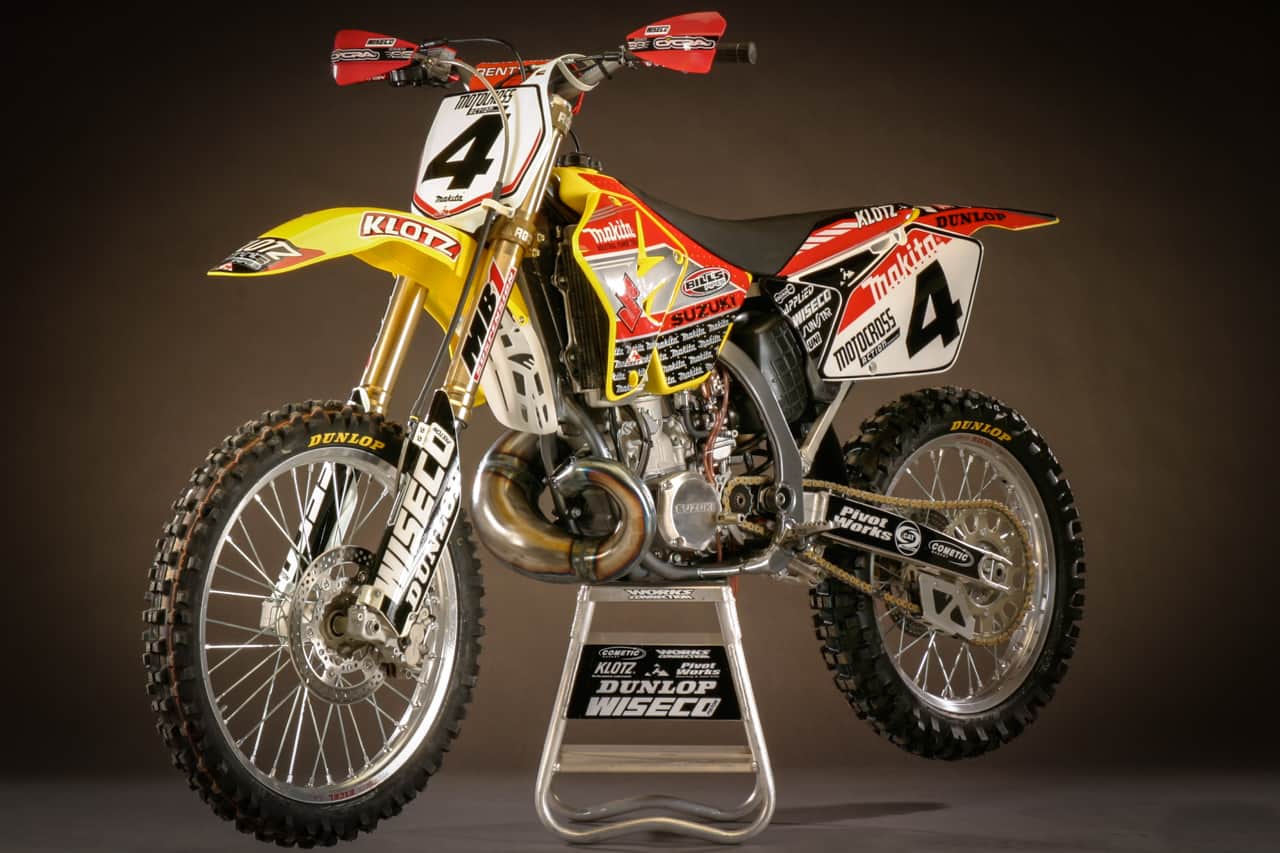 An archived test from a 2004 issue of MXA.
An archived test from a 2004 issue of MXA.
A SUZUKI RM250 THAT WE WISH EXISTED TODAY
Let’s get this out of the way immediately. In 2004 Makita did not sponsor a motocross team (they did however sponsor the Factory Suzuki effort starting in 2005), nor did they make motorcycle parts. Makita USA was and still is a leading manufacturer of over 320 professional, industrial quality power tools. So what was Makita’s interest in motocross? They sold and still sell tools to mechanics, and one of the time-proven marketing methods is to put your products in the hands of well-known professionals. Drag racing, Indy cars, NASCAR, power boats, aerobatic airplanes and motocross are tool driven sports. If a tool company can get a high-profile mechanic to use its products, the message trickles down to the almost unlimited home garage market. Thus, every tool manufacturer has a serious race program.
The difference with Makita is that we’ve never seen a DeWalt, Craftsman, Cornwell or Husky motorcycle. Makita’s Suzuki RM250 caught our attention. We would have seen it as just another promotional bike, except for three things: (1) We saw it race on a weekly basis. So we knew that it wasn’t just a puff piece. (2) We were familiar with the companies and hop-up gurus who put time and effort into the machine. They were serious guys, and that made the bike serious to us. (3) A stock Suzuki RM250 is the ultimate expression of a two-stroke. It’s quick, agile, accurate and light. The engine has terrific throttle response and solid midrange. And, we think the rear shock is the best performing damper on the track. We had to wonder how a full-race, full-mod, full-on Suzuki RM250 would feel. Thus, we arranged to test the fully decked out Makita Suzuki.
There is no need to pussyfoot around the Makita RM250. It ran great. It was stronger, broader and smoother than the 2004 stocker. The power came on instantly, making the RM snap to attention. As the throttle was rolled through its range of motion, the power oozed out the powerplant and kept on going. Where the stock RM250 signed off after the midrange, Makita’s engine pulled harder into the top end.
This was a good engine–fast, quick and snappy. It was very much a two-stroke. No growl, no rumble and no churn–just a hard hit, quick rev and shower of dirt. It was more fun than any four-stroke ever built.
What did the engine have in it?
Gearing: The bike was equipped with a 14-tooth Sunstar countershaft sprocket. It made second gear very usable and third very tall. The one-tooth swap was the equivalent of a 3-1/2-tooth drop on the rear. We adapted to it, but probably wouldn’t have gone to such tall gearing.
Piston: The engine used an ultra-light Yamaha YZ250 single-ring piston from Wiseco. This was the same piston that Team Yamaha used during the 2004 Supercross series. The part number is 808M06640. Don’t be shocked that the RM250 had a YZ250 piston in it. The RM is a very close copy of a Yamaha engine.
Jetting: We used a 42.5 pilot, 170 main and one step richer needle (the N3WK needle was stock on the 2001 RM250).
Reed cage: A Moto Tassinari VForce reed cage was spaced rearward by the 5mm reed spacer off a 2004 Yamaha YZ250 (yes, that Yamaha parts fits also). If you can’t justify putting a Yamaha part on your RM, the spacer is also available from Cometic.
Clutch basket: To complement the Wiseco piston, the Makita RM250 had a Wiseco forged clutch basket installed, but, in the spirit of détente, it used a Hinson inner hub, pressure plate and outer cover.
Pipe: Bill’s Pipe supplied the pipe, silencer and cylinder porting. It was good stuff.
Fuel/oil: The Makita bike ran a 50/50 mix of race gas and pump gas, with Klotz R50 in the gas and Klotz Flexdrive30 gear oil in the tranny.
Ignition: Our test RM250 came with an iCat spark enhancer. The MXA wrecking crew has had good luck with iCats on most bikes (especially the CR125).
The engine was great but was only half the fun of racing a Suzuki. As important as good power is feel, nothing turned as sharp, felt as light or was as agile as an RM250. This is the warp-drive version of motocross handling–with less head shake than in the past.
To achieve an even better feel, the Makita bike had a set of 21.5mm offset RG3 triple clamps. The majority of MXA test riders felt that the RG3 four-post clamp was the best clamp available. It was a plus on any bike. Stock RM250 offset for 2004 was 22.4mm, which was less than in 2003 and largely responsible for the calmed down headset. RG3’s 21.5mm triple clamps were unobtainium parts that RG3 didn’t sell to the public, but they were used on Team Suzuki’s bikes.
The Makita bike had MB1 suspension on it. Never heard of them? The MB stands for Mike Battista, who worked for Race Tech and American Showa R&D before breaking away to start his own company. At Showa, Mike tuned the suspension of Ricky Carmichael, Kevin Windham, Mike LaRocco and Ernesto Fonseca.
MB1’s goal for the RM250 fork was to improve plushness in the small bumps, while at the same time improving bottoming control. The stock 0.44kg/mm fork springs were used, while the 47mm Showa forks got a complete revalve (for smoother action and more mid-control). The compression valve was also exchanged for more progressive action.
The forks troubled us for the first couple of races, but we finally found a setting that eliminated mid-stroke harshness without causing the forks to bottom. They were plush–and maybe a tad soft, but very fluid.
Every MXA test rider liked the stock RM250 shock–although the spring rate needed to be upped for the big boys. Suzuki’s 50mm Showa shock also got an MB1 revalve, and the stock 5.2 shock spring was upgraded to a titanium 5.3kg/mm shock spring. The stiffer rate helped keep the shock higher in the rising rate, while the Renton titanium spring lowers your bank account. The titanium spring was 50 percent lighter than the production spring. The shock was very good from the git-go.
It’s a shame that Suzuki was building the best 250cc two-stroke motocross bike during the era of the four-stroke. They were getting neither the credit nor the bike sales they deserved. This machine was a dream to ride. Racing an agile two-stroke is like racing a quarter horse (a four-stroke is more like a Clydesdale). The RM250 was the most nimble of all two-strokes, and every part of the Makita bike was an improvement.
Oh, by the way, the MXA wrecking crew used a Makita cordless 12V impact driver (model 6916DWDE) when we worked on our test RM250.


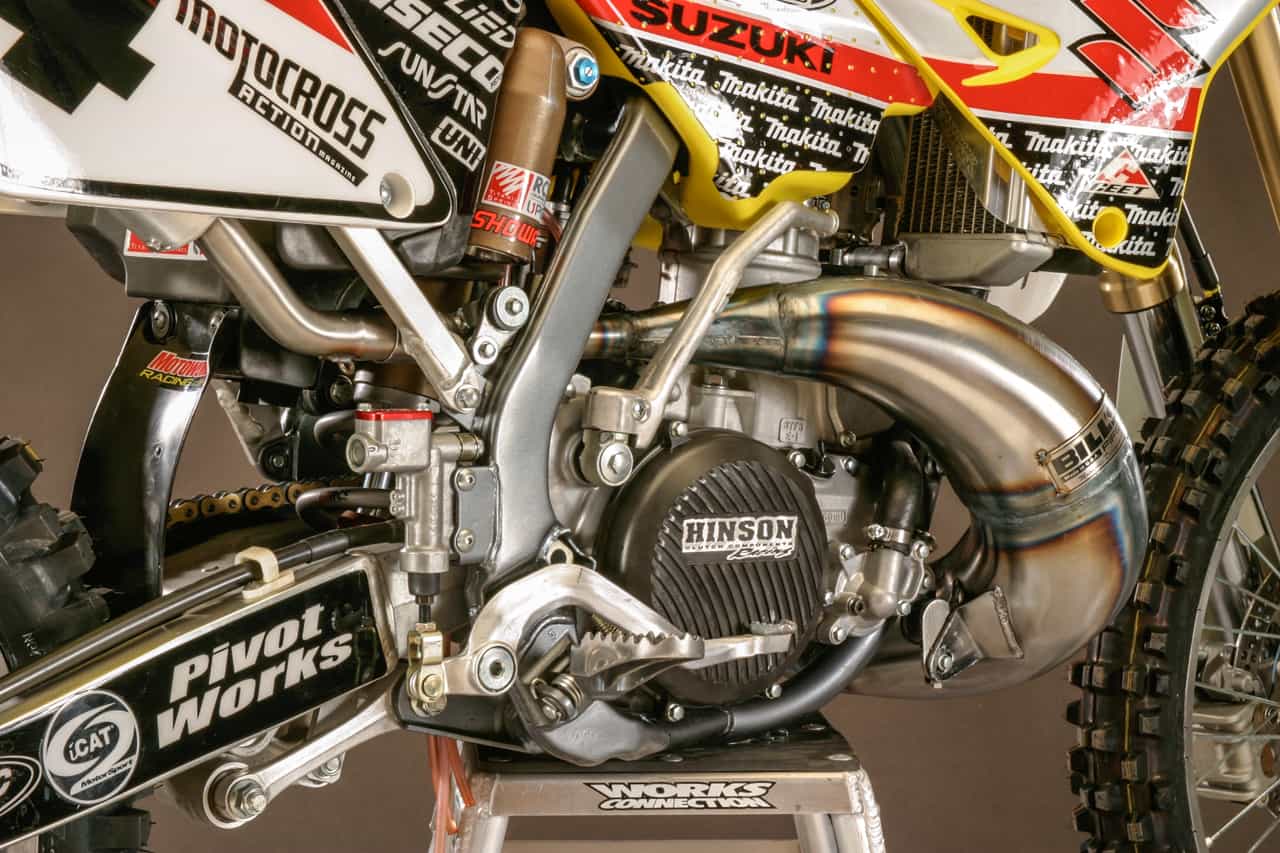
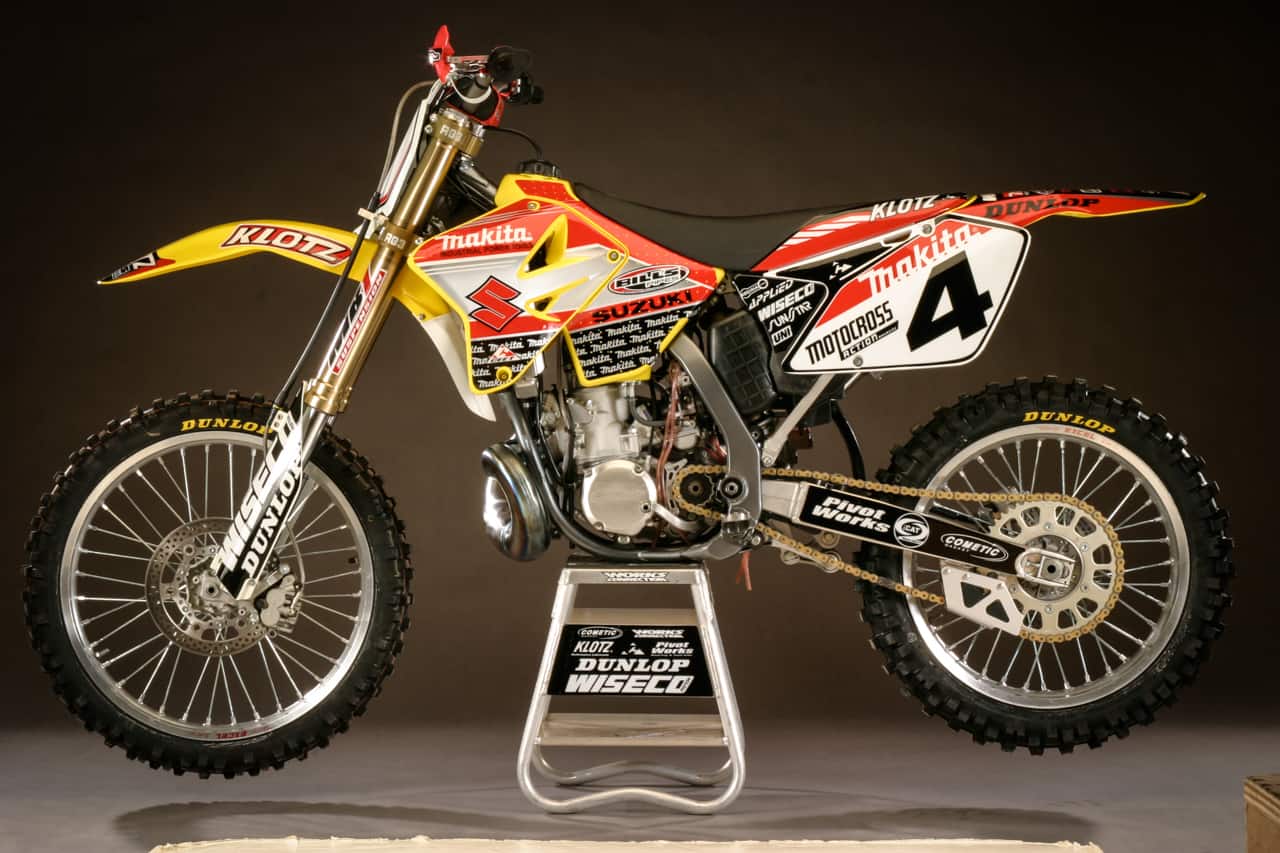
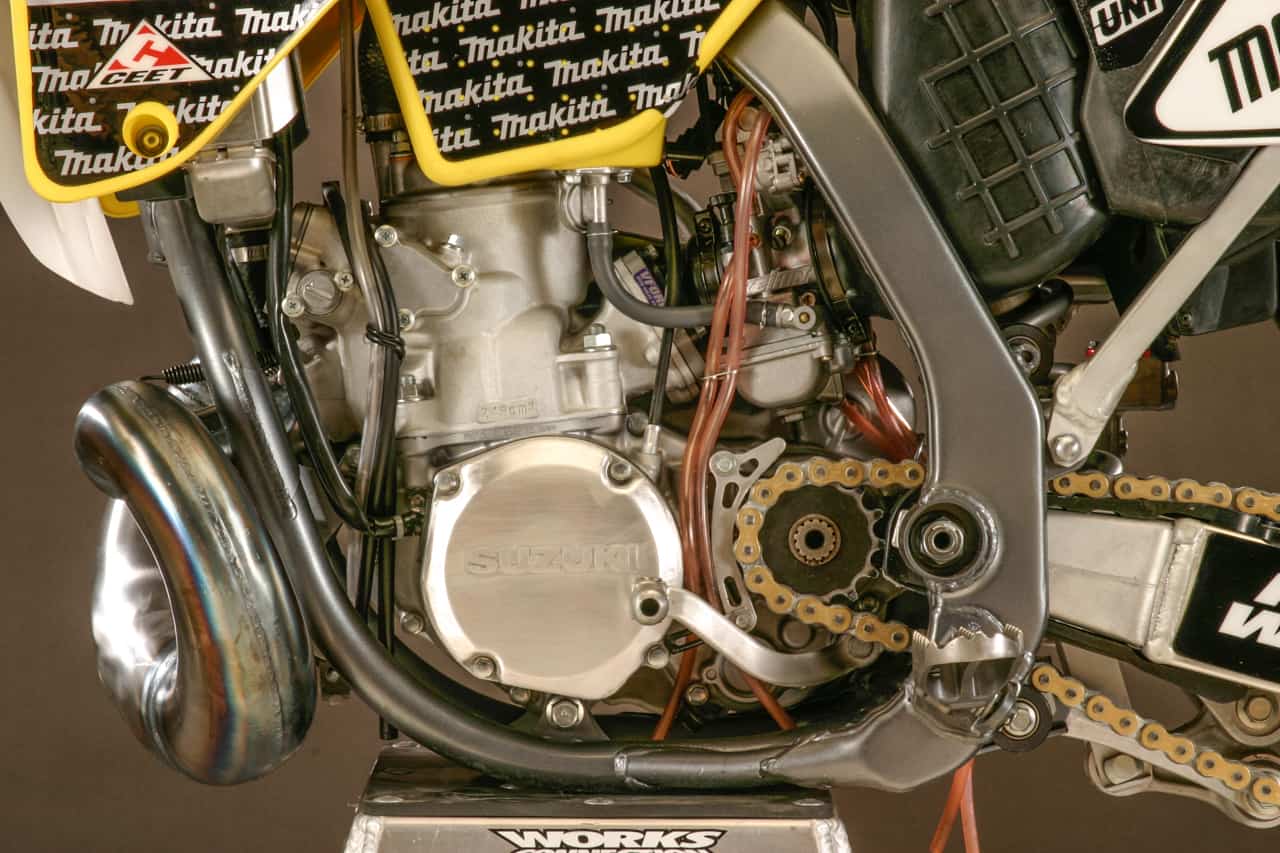
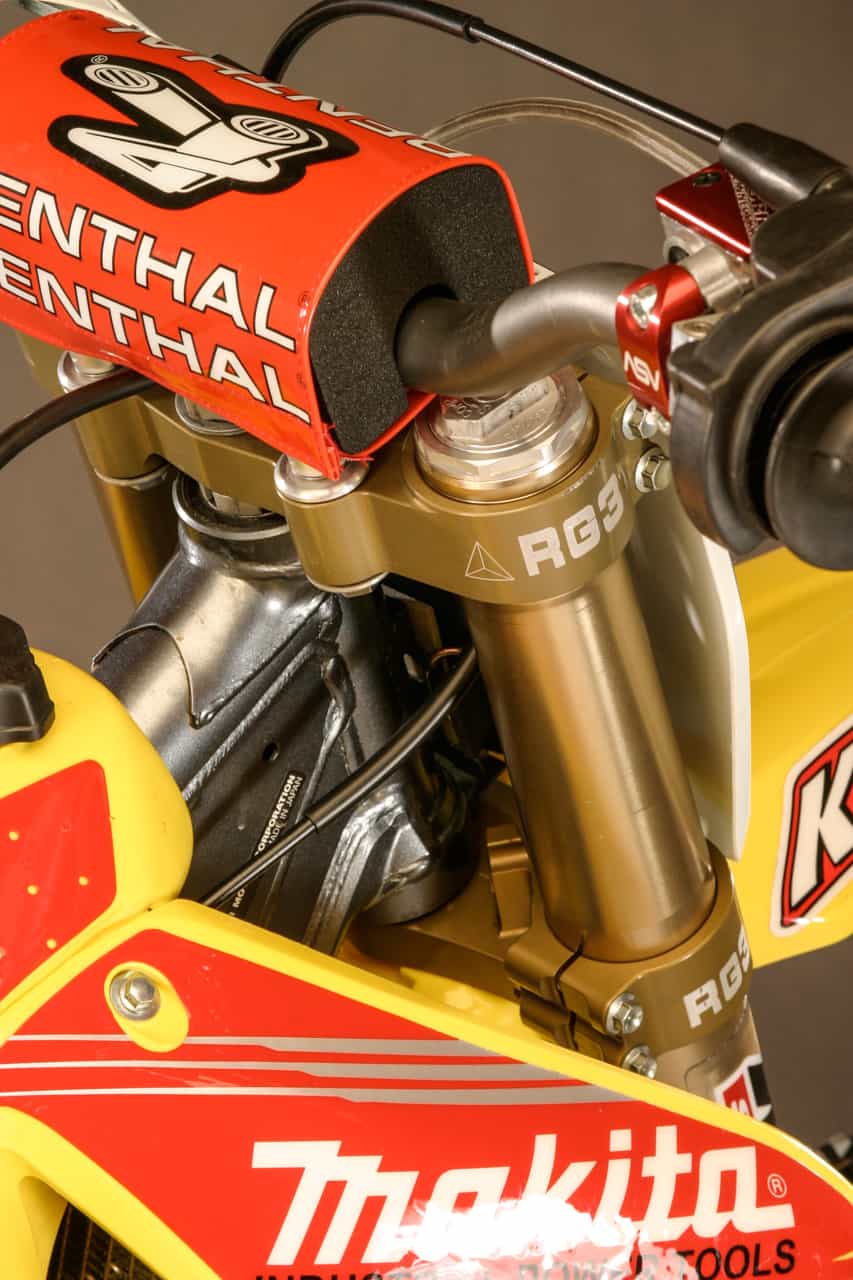
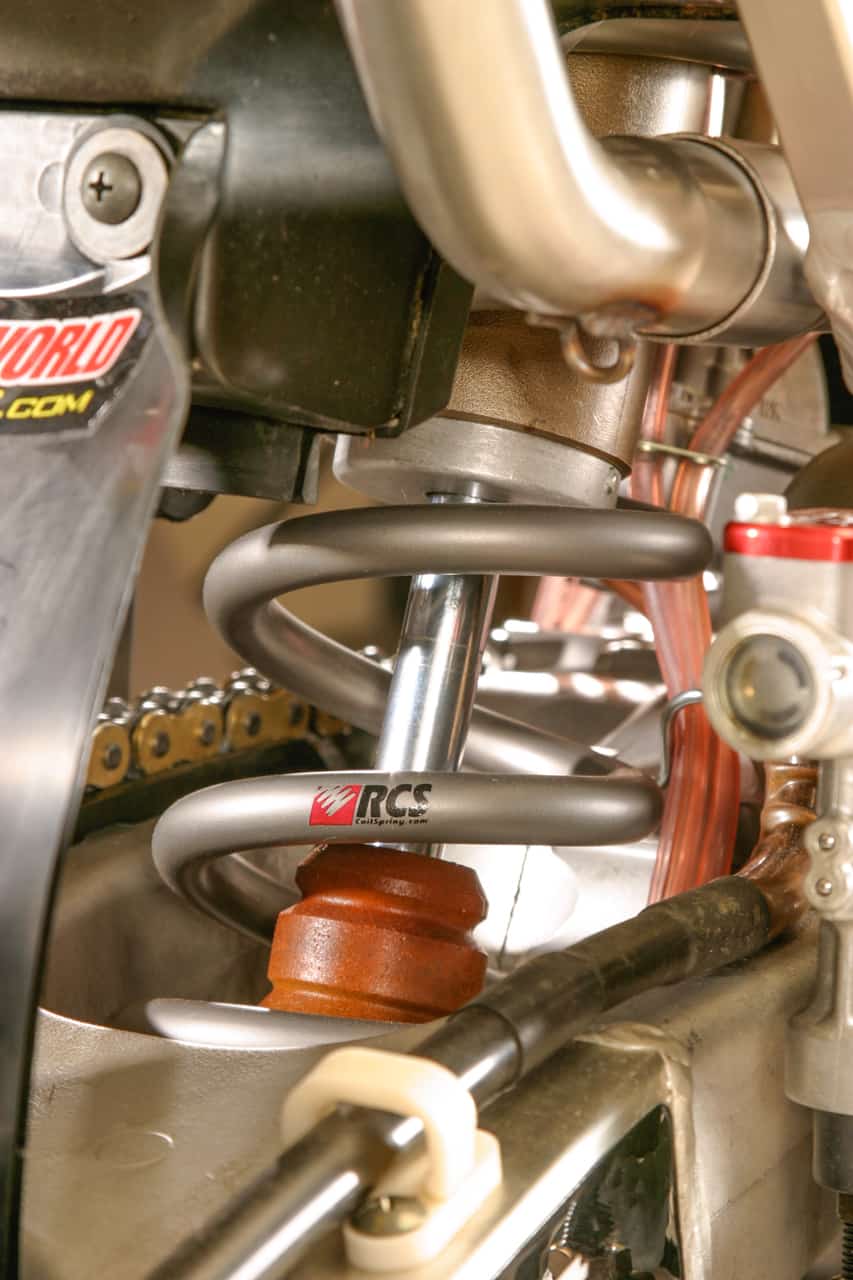



Comments are closed.